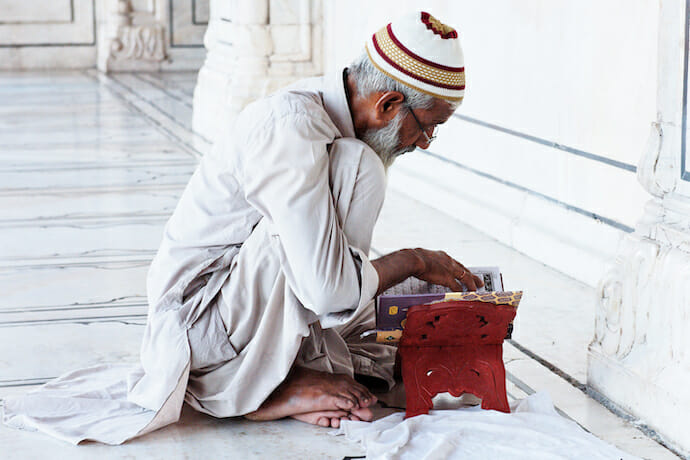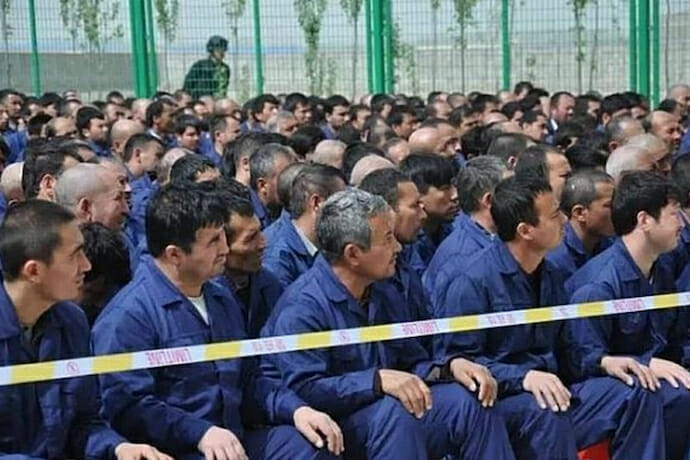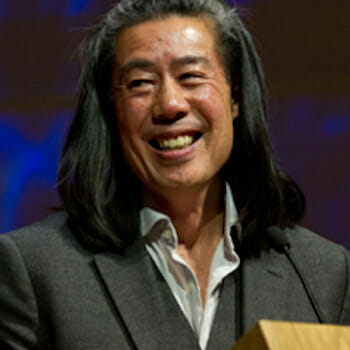
Reducing History: The Crackdown on Islam in China and India
We enter 2020 with a sense that Islamic populations are under siege in both China’s Xinjiang province and throughout India. That the two greatest new powers on the global stage, both committed to international pluralism, should be so determined to crush and restrain a particular expression of pluralism is in some ways astounding, and in other ways fully tragic.
It is astounding since Islam has played a role in Chinese and Indian societies for hundreds of years. The great voyages of discovery by Admiral Zheng He in the 1400s, including to East Africa, were noteworthy for Zheng’s bringing home to China of a living giraffe as a wonder of nature’s own pluralism. But he was able to make contact with coastal African societies who were Islamic by virtue of the fact that he too was Islamic. The Mongols who swept huge parts of Europe and China in the 1300 and 1400 centuries practised a form of Islam – though not the Shari’a, preferring their own customary laws. Nevertheless, Islam has been no stranger to China for many long years, and the Uyghurs whose land borders Transcaucasia, and who speak a form of Turkic language, have themselves long been torn between two great masses of culture and have sought until recently, though not always successfully, to ride a middle way.

In India of course, the era of the Mughal Empire from the 15 to 1800s imprinted India with beautiful architecture like the Taj Mahal, but also meant an India with a mixed population of Hindu and Islamic believers. The independence prime minister, Jawaharlal Nehru, famously wore a ‘traditional’ costume that owed in part to the coats worn by Mughal noblemen, and to Savile Row tailoring. In a way, it reflected an India imprinted by both the Mughals and the British Raj, but Nehru made it something distinctively ‘Indian’ – to little enough effect, given the terrible bloodshed of partition in 1947 and the communal disturbances that have always been a feature of modern Indian nationhood. However, those disturbances have never taken the form of constitutional exclusion of Islamic identity. Hitherto, one could be Islamic and Indian, even if sometimes problematically so. That may soon no longer be the case with Prime Minister Modi’s proposed new citizenship law.
And, in China, the crackdown in Xinjiang, with the construction of vast ‘re-education’ camps – called ‘concentration’ camps by many international critics – speaks to a great effort not to exterminate a people, but certainly to reduce their Islamic identity to the extent that they would unproblematically fit into a state with Han characteristics and Communist ideology. It speaks to a huge effort at marginalisation of a religion seen as a challenge to an official ideology.
In a very real way China has never handled religion well. It doesn’t matter much which religion it is. From the decades-long standoff with the Vatican as to the provenance of any Catholic hierarchy in China – whether they should be appointed from Rome or Beijing – to the persecution of a conflation of traditional Chinese religions and mysticisms in the Falun Gong, to most famously the complete inability to understand the Tibetan drive to a distinct identity, the Chinese Communist intolerance to anything that could rival primary affiliation to the Party and the State has been infamous. This extends not just to religious and ethnic groups, but to all shades of civil society. Basically, even now, the Communist Party seeks to occupy or at least control that huge space of society elsewhere occupied by religion and citizen self-organisation; of private and spiritual space, in case it makes a public challenge to the Party’s hegemony and, narrowly, of a Han ethnic character to all things within the borders of China.

The Uyghurs in the concentration camps thus have become religious, ethnic, and political prisoners.
In India, Modi’s efforts to craft a pure Hindu state was something never in the mind of the British colonial project, nor in the minds of Gandhi and Nehru – although their own outlooks and actions towards Islam were often very clumsy – but Modi’s is a curious project to amalgamate an ambitious modernity with an historical pedigree that asserts itself in the world as the precursor of all modernity in its proto-scientific thought and metaphors. It is a curious science and scientism unlike any form of coercive harmonisation of all pluralisms ever seen. Internationally, it is to establish Indian as the equal (if not the superior) of all European Enlightenment, and to declare even to China that the future competition between India and China in international economics will be fought as a battle of equals. It is a conditioning of thought at home, and a preconditioning of international perceptions to come.
In this sense, the crackdown on Islamic peoples in China and India are different phenomena. But the grandiosity of the Han and Hindu projects contains precisely its own flaws. Both countries are vast spaces with vast histories and, basically, vast peoples with vast beliefs. The project to harmonise and hegemonise them is finally a project not just to do with contemporary national cohesion, governability, and forward direction, but it is a project to redirect and reduce history to the modern projects of basically single parties claiming singular ownership of nations they view as themselves singular and unique. This uniqueness is to be policed. And it brings to modernity the most ambitious forms of police state the world has witnessed. Finally, history and forms of God are challenged – and, finally, things to be ruled.

